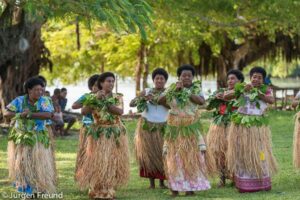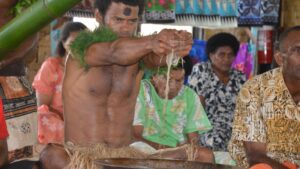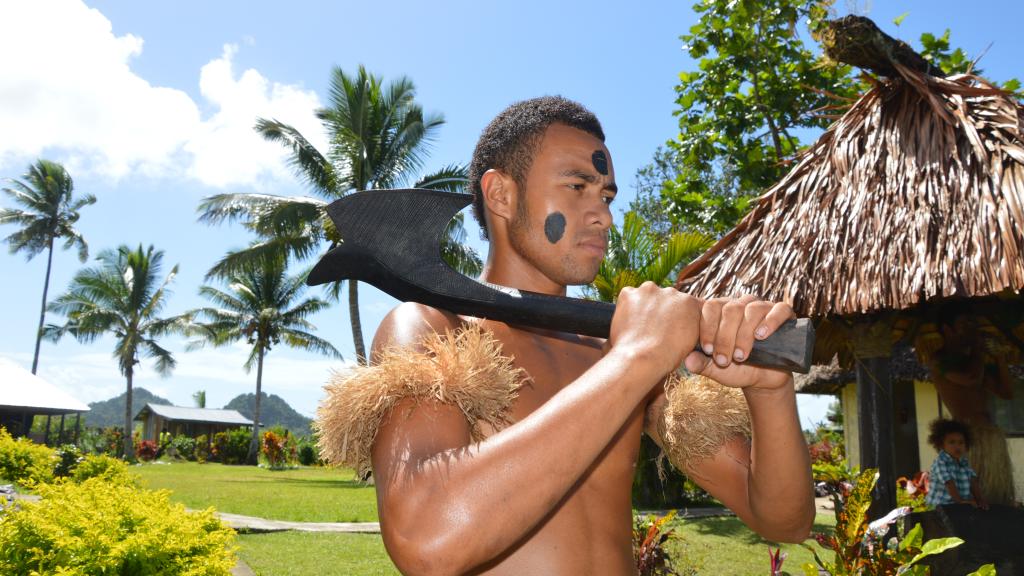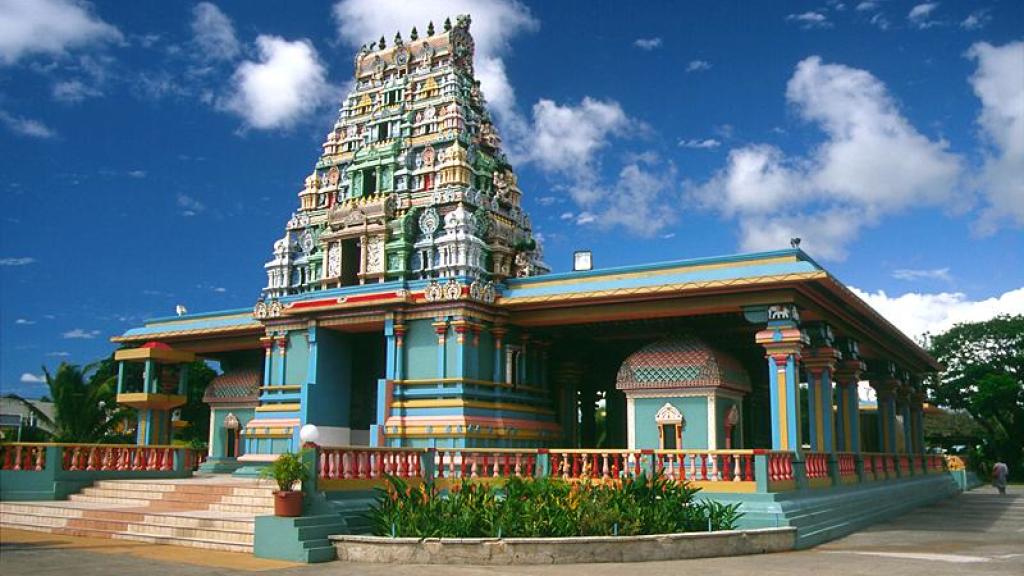
Fiji Culture, Religion and the People



Fijian Culture
Fiji is a melting pot, one of the most multi-cultural and diversified societies in the Pacific, comprising the iTaukei, Indo-Fijians, European and part-Europeans, Rotuman’s, Chinese and Pacific Islanders who are all referred to as Fijians today. Given the distinct backgrounds, it is natural one can see a mix of cultures and traditions in the country enriching one’s experiences on each visit. Guests are enthralled by the sea of colours-both from the natural beauty of the seas, mountains and the greenery all around the country as well as from the colourful Bula shirts and dresses donned by the Fijians. This embodies and demonstrates the “bula spirit” and the easy-going, fun loving nature of the citizens who are known as the happiest people in the world.
The Fijians are as said, pretty easy-going and welcoming people. Just that you may need to observe some protocols if you are invited into a village – say, wear modest clothing and take off your hat (wearing one is an insult to the chiefs) when in the village. Leave your shoes outside the door when entering a home either in a ‘koro’ or in most other homes and temples in Fiji. Do keep in mind that it’s also insulting to touch someone’s head – which can be tempting when you are surrounded by wide-eyed, smiling children.
You may often be invited for kava or grog while in Fiji. This is part of the life of Fijians and so don’t worry, enjoy the drink and the rituals! It is a healthy non-alcoholic drink and don’t worry about the numb tongue! Its working and you shall soon get used to this!
When visiting a village, it is customary to present a gift of kava, which is also known as “yaqona”. The gift, (a “sevusevu”), will cost a little but will go a long way in making friends. If you are accompanied by a guide, he/she can arrange this for you.
The sevusevu is presented to the traditional head of the village (“Turaga Ni koro”). After it’s been pounded into powder and mixed with water, it is usually served in the head person’s house.
Be prepared to shake hands and answer personal questions like, where are you from, are you married, how many children do you have, do you like curry, do you play rugby and so on.
Fijians are the friendliest people in the world. Your respect for their customs and traditions will not only make you a welcome guest in their villages and homes, but add another dimension to your Fijian holiday.
Cultural Ceremonies
The LOVO
This is a magnificent feast, cooked in the earth. It’s like a barbeque, only a little more smoked, and a very efficient way to cook large quantities of food at the same time. To make your own you’ll need;
- firewood
- some smooth-surfaced stones
- a roll of foil
- banana leaves
- clean sacks (optional)
- a shovel (not optional)
Dig a hole 60cm (2ft) deep and 72cm wide. If the soil is damp, spread a layer of ash in the bottom of the hole before putting in the stones and wood.
Light the fire and keep it going until the stones are red hot, then move the unburnt wood and coal and spread the stones out to make a platform for the food.
Traditionally, Lovo food will consist of cassava (tapioca), kumala (sweet potato), yam and taro – all of which should be peeled. Wrap a shoulder or leg of pork or ham in foil (and/or chicken, fish or lamb) and place in the oven. Put the larger items at the bottom and the things that need less cooking at the top.
Cover the feast with banana leaves or coconut stalks and damp sacks provide the final insulation. Cover the lot with soil and pour yourself a drink.
The food will take around two hours to cook. Don’t worry, you can play soccer or rugby in that time or go out for a swim!

The MEKE
Music is woven into the fabric of Fiji and the Meke embraces traditional song and dance to tell of legends, love stories, history and spirits of the islands. It can vary from a blood-curdling spear dance to a gentle and graceful fan dance.
There are two groups in the make – the orchestra (Vakatara), who sit on the ground and sing or chant for the second group, the dancers (Matana).
The instruments are percussion (hardwood gongs, bamboo tubes, beating sticks, etc). For the Meke the performers wear garlands of flowers (Salusalu), the men wear full warrior costume and the women, in traditional clothes, glisten with scented coconut oil.
YAQONA (KAVA)
Yaqona (pronounced yangona) is Fiji’s national drink. It’s made from the pulverised root of a member of the pepper family. It’s believed to have medicinal qualities (apart from making you feel mellow).
Legend has it that the ceremony came from Tonga where the plant sprang from the grave of a Tongan princess who died of a broken heart. In a formal yaqona ceremony authority is given by the village spokesman to begin mixing the kava.
When mixed, a server will carry a cup (‘bilo’) to the chief guest, who must clap (‘cobo’) once before and after completely drinking the first cup. The order of serving depends on the status of those present, from the highest-ranking chief down.
Drinking yaqona has proved to be a great social unifier – it’s hard to be angry with someone after sharing kava – and it usually leads to relaxed chat not unlike that in a casual bar.
Fiji Religion
A multi-racial, multi-cultural nation, the population of Fiji is made up of significant numbers of followers of all major religions.
Visitors will find Christian churches, Hindu temples, Sikh gurdwaras and mosques throughout the country. Visitors are more than welcome to join the locals for Sunday worship at the churches or at the temples and mosques, and it is recommended that you may join even if you’re not that religious.
A Methodist service will give you a good insight into how the Fijian village culture is structured and why the people are so friendly and family-focussed. You may not understand many of the words, but the singing and ceremony will stay in your memory. Visitors from India will find that many of the religious practices from India were taken across by the Girmitiyas some 144 years ago and these are very much alive and practiced and seen through the colourful temples, mosques and gurudwaras in Fiji.

Language
One of the great things about this Pacific paradise is that everyone speaks English as well as Fijian or Hindi and all three are recognised as official language, and the Constitution is also written in these three languages as well.
With the Fijian of iTaukei language, there are a few idiosyncrasies.
For instance, any word with a ‘d’ has an unwritten ‘n’ in front of it – Nadi is pronounced ‘Nandi’ and the delightful cold, marinated seafood dish kokoda, is ‘kokonda’. You put an ‘m’ before the ‘b’ in words like Toberua (Tomberua). Sigatoka is ‘Singatoka’, Naigani is Ninegani’. And a ‘c’ is pronounced ‘th’, as in the Mamanuca Islands.
Some handy words and phrases are:
English | Fijian | Pronunciation |
Hello/hi | ni sa bula | nee sar bula |
Good morning | ni sa yadra | nee sar yarndra |
Goodbye | sa moce | sa more there |
Please | yalo vinaka | yarlo veenarka |
Excuse me | tulou | too low |
Yes | io | ee or |
Thank you/good | vinaka | veenarka |
Thank you very much | vinaka vaka levu | veenarka varka levoo |
Much/big | levu | levoo |
No | sega | senga |
Eat | kana | karna |
Village | koro | ko ro |
A little/small | vaka lailai | va ka lie lie |
Great/a lot | vaka levu | va ka levoo |
Fast | vaka totolo | va ka tortorlo |
Slowly | vaka malua | va ka mar lua |
House | vale | va le |
Toilet | vale lailai | va le lie lie |
Come | lako mai | la ko my |
Go | lako tani | la ko tan i |
One | dua | du a |
Two | rua | ru a |
One more | dua tale | du a ta le |
Note: Greetings may be shortened, for example – Ni sa bula can be just ‘bula’, ni sa yandra can be just ‘yandra’ and sa moce can be simply ‘moce’.
Those speaking Hindi or Urdu will find less difficulties as many of the words are same, though you shall be introduced to Fiji Hindi which is less formal than the ‘shudh hindi’ often spoken in India. However, Namaste remains Namaste and feel free to converse in Hindi.
